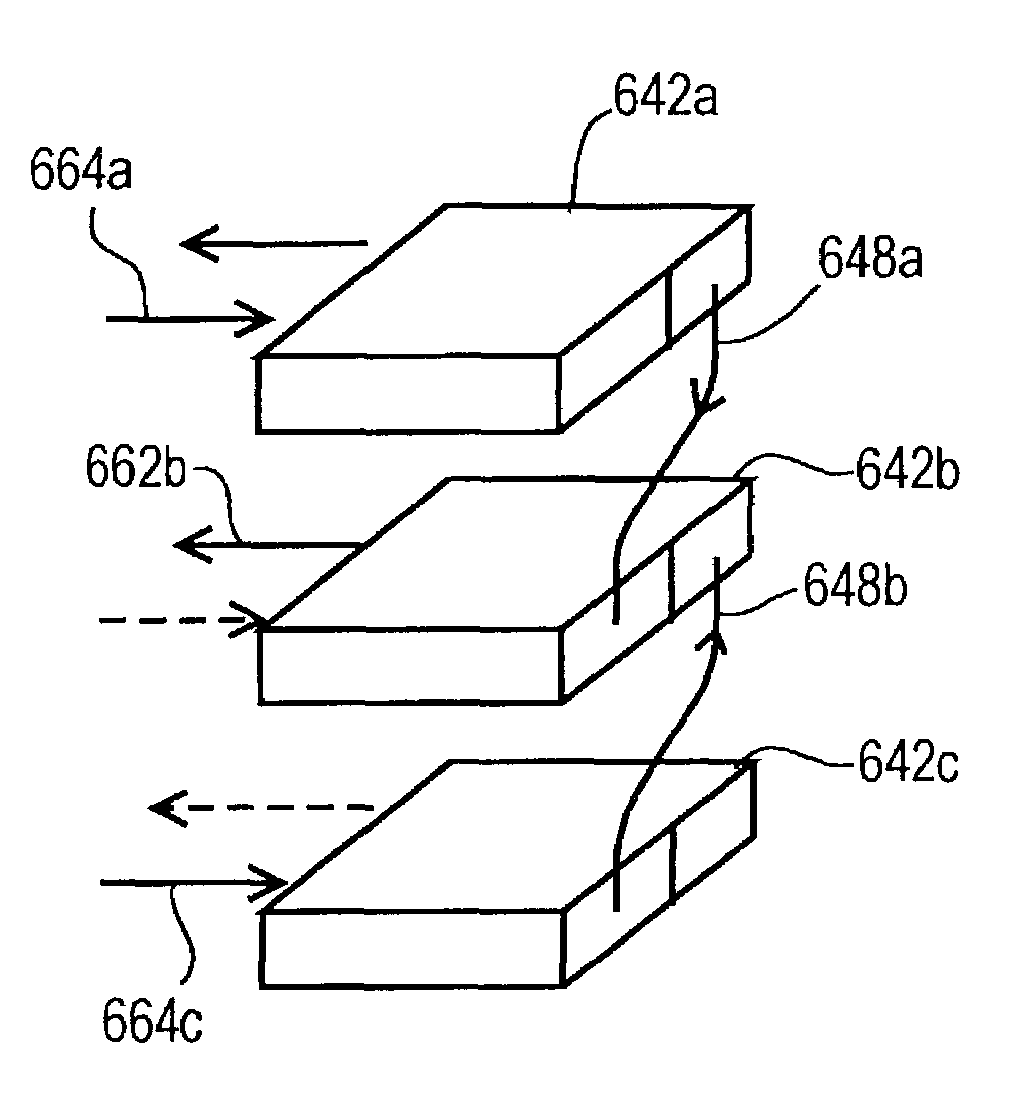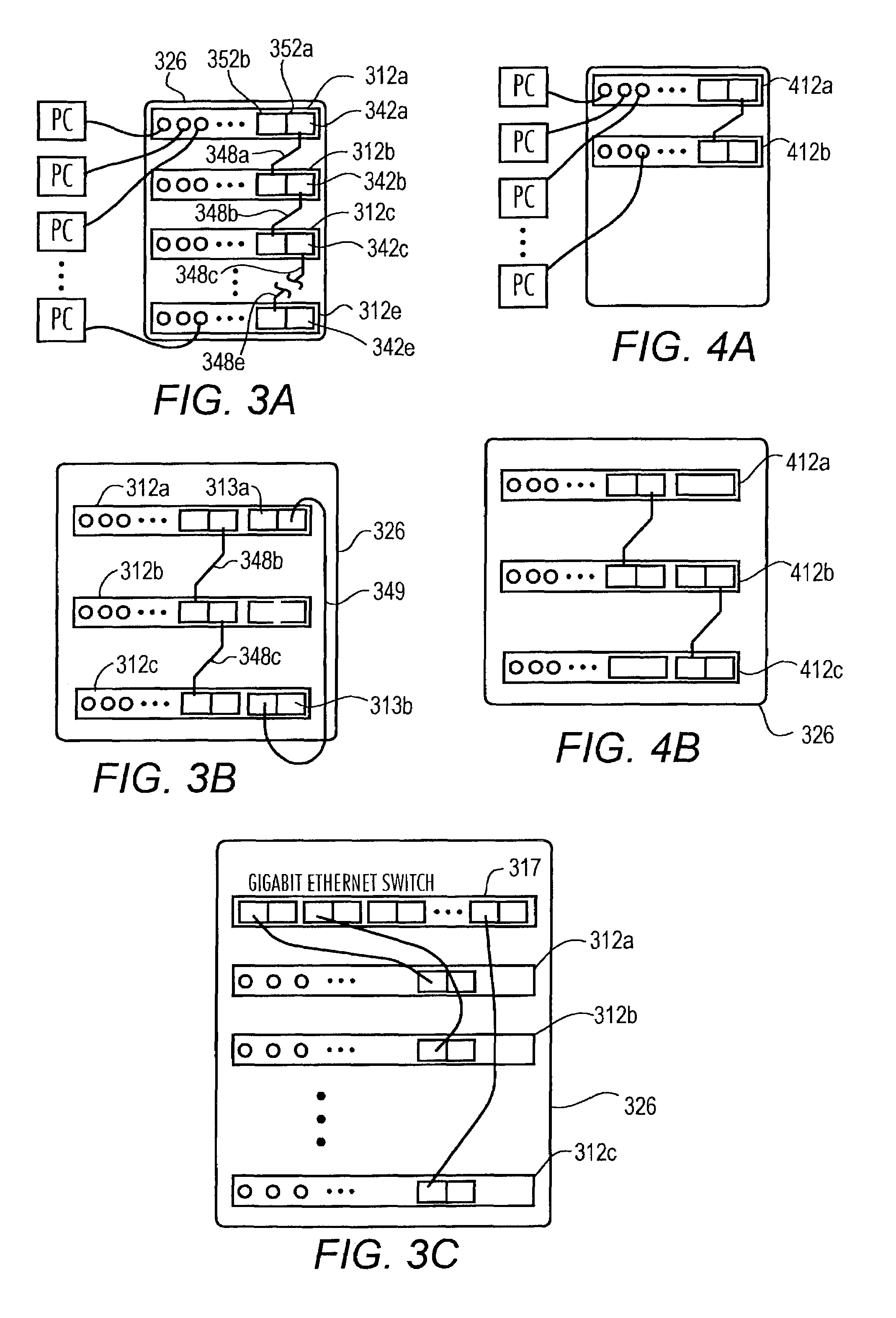Module for distributed network repeater
a distributed network repeater and module technology, applied in the field of computer network repeater systems, can solve the problems of increasing reducing the size of the currently required repeater, so as to reduce or avoid the number of instances of ipgs, facilitate the operation, and increase the size of the ipg
- Summary
- Abstract
- Description
- Claims
- Application Information
AI Technical Summary
Benefits of technology
Problems solved by technology
Method used
Image
Examples
Embodiment Construction
[0024]As depicted in FIG. 1, a common configuration of previous networks included a switch 112 having a plurality of ports 114a, b, m, p coupled to a variety of network nodes, illustrated, in FIG. 1, by personal computers (PCS) 116a, b, m. Nodes can include a variety of items including printers, scanners and the like. Depending, at least in part, on the type of network implemented, the connections can be way of cables 118a, b, m, such as coaxial cables, twisted pairs, optical fiber, or one or more wireless links and the like. Often, networks are configured to effectively place limits on the length of the node-connecting cables 118a,b, the and accordingly, in many configurations, the switch 112 must be positioned within a predetermined distance from the nodes 116a, b, m. When it is desired to also include nodes positioned beyond such distance, commonly one or more additional switches 122 are placed in a remote location, often coupled by a link such as an optical fiber link 124. In th...
PUM
 Login to View More
Login to View More Abstract
Description
Claims
Application Information
 Login to View More
Login to View More - R&D
- Intellectual Property
- Life Sciences
- Materials
- Tech Scout
- Unparalleled Data Quality
- Higher Quality Content
- 60% Fewer Hallucinations
Browse by: Latest US Patents, China's latest patents, Technical Efficacy Thesaurus, Application Domain, Technology Topic, Popular Technical Reports.
© 2025 PatSnap. All rights reserved.Legal|Privacy policy|Modern Slavery Act Transparency Statement|Sitemap|About US| Contact US: help@patsnap.com



